A not directly observed but solved for implicitly
SOLOW MODEL
- NX = 0, G = 0
- production function constant returns to scale
Capital-Labor ratio
Production Function: (per worker)
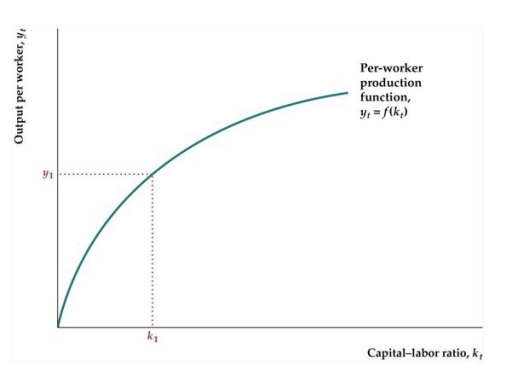
diminishing MPK
Aggregate demand (per worker):
Savings where s is saving rate
investment(per worker):
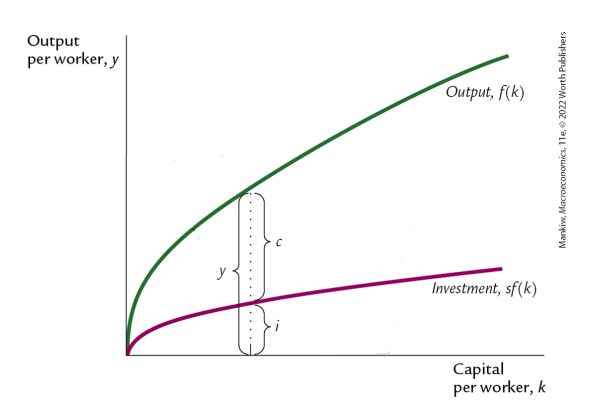
Capital stock next period (Capital Accumulation Equation):
steady state occurs when , where is the steady state
- intersection of these two curves
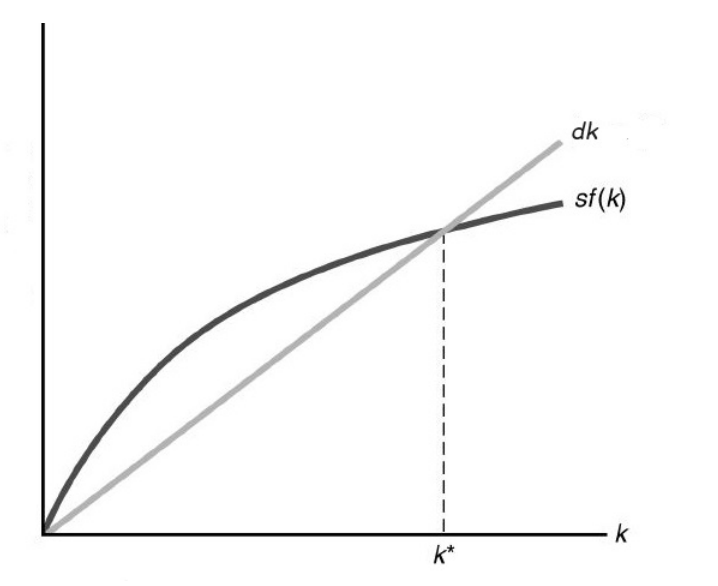
Golden Rule capital labor ratio (maximizes consumption per worker): maxed when
Adding population growth
Capital Accumulation Equation:
Solow Model with Pop Growth:
Steady state at:
at steady state:
higher decreases at steady state
Golden Rule Capital-Labor Ratio:
COMPARATIVE STATICS
initially at steady state so no change, after savings increases increases, then back to steady state
-
higher savings rate has level effect not growth effect
-
positive relationship between savings rate and income per capita
therefore also lower output per worker -this is just one relationship:
- obviously this is not entirely accurate because it ignores contribution to pension, innovation, tech advancement, higher pop growth means more scientists, inventors, engineers…
Case Studies
War: (ceteris paribus) decline in K:
- k and y fall, high growth as decline in population: : k will decrease down to k* period of contraction
Productivity Change: assuming production function shifts up. and remains at higher level steady state: (one time effect)
this is the same effect as
Balanced Growth
- Y, K, C grow at same rate
- steady state exhibits this as they all grow at
- balanced growth implies (capital-output ratio) is constant
Convergence
- Solow model predicts conditional convergence
- converge if same steady state
AK Model/Endogenous Growth
Prod. same per worker
- constant returns to scale
MPK constant (not diminishing)
Supply of Goods and Services:
Demand for Goods and Services:
Given fixed saving rate:
Capital Accumulation Equation
essentially no steady steady state
Growth rate of
will grow forever if
savings rate affects long run growth rate of output
Growth Policies
”best” savings rate is golden rule, US is not saving enough
Policies to incentivize private savings:
- lower tax, which :
- small effect due to effect on lifetime income Policies to increase Government savings
- raise taxes or cut spending
- spending hard to reduce
- won’t effect natl. savings under Ricardian Eq.
countries have to endure a decline in consumption before reaching the golden rule steady state
Policies to raise productivity:
- improve infrastructure
- net-zero effect due to crowding out private investment
- build human capital
- education, worker training and relocation programs, health programs
- R&D
- grants, funding gov research, tax incentives, support for scientific education
Additional Considerations
Institutions
real income per capita correlated with institutional quality improvements in institutional quality reduce growth volatility good institutions have regulatory framework to protect investors → promotes investment
Free Trade
geographic differences can be used to study because they are correlated with trade and not other stuff
Trade/GDP GDP per capita
- trade gives access to foreign tech, know-how, and investment
- comparative advantage
Poverty Trap
each period there is fixed amount of income that must be consumed between 0 and 1
cap accumulation:
Steady States:
- no intersection
- no steady state
- tangent
- one steady state
- two steady states
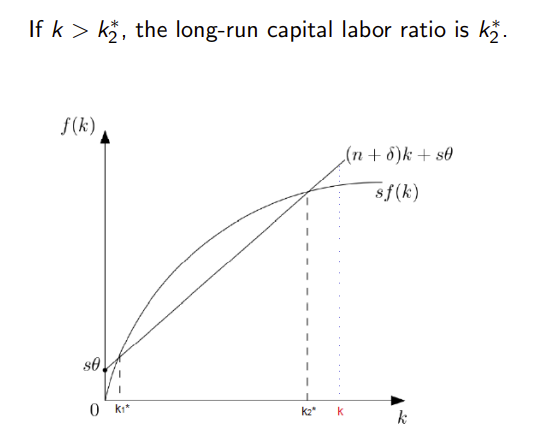
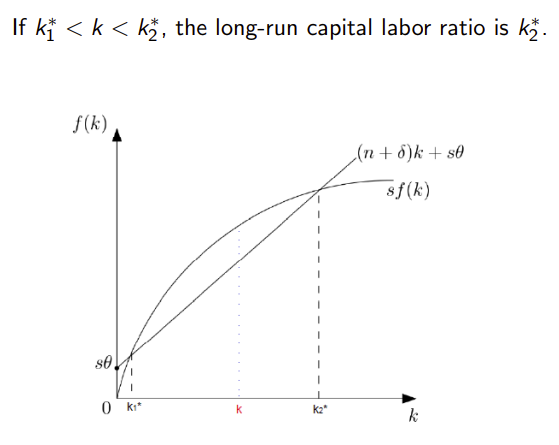
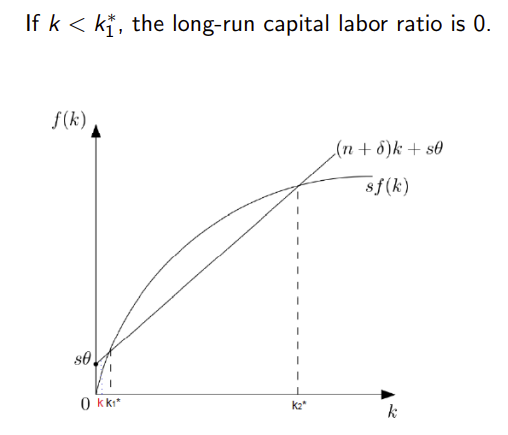
countries that start poor will remain poor
Policy to break this trap:
big-push - increased aid and investment from foreign countries